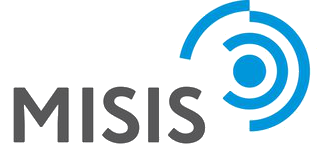In today’s blog, I’d like to continue by providing suggestions of writing assignments for the other two units of the course: “Health and Well-Being” and “Cultures and Diversity.”
Health and Well-Being
On Campus
- Activity: Students discuss campus services that help university students to maintain both physical and emotional health (e.g., student health center, student wellness center, psychological services, nutrition programs).
- Suggestion for writing: Students can write a short report on these services, programs, and materials. Alternatively, students can also create a manual for new students including information about these services.
- Activity: In small groups, students make a list of suggestions on how to maintain a healthy lifestyle as a student (including both mental and physical health).
- Suggestion for writing: Students write a short “recommendation” piece for new students describing a few practical suggestions on how to keep a healthy lifestyle as a university student (including both mental and physical health).
- Activity: Students discuss university services that help those suffering from eating disorders.
- Suggestion for writing: Students write a “how to” piece providing a list of suggestions on how to help a friend suffering from an eating disorder.
Beyond
- Activity: Students work in pairs (or small groups) and discuss the following questions (select a few for each pair/small group):
- Are you a health-conscious person?
- In your opinion, who are the healthiest people in the world and why are they healthy?
- What things, in your opinion, might damage our health?
- Do you read articles online (newspapers, magazines) on how to stay healthy?
- How does eating a well-balanced diet affect our health?
- Have you ever given up a habit in order to improve your health?
- What do you do to stay healthy?
- How does our lifestyle affect our mental and physical health?
- In your opinion, do our emotions affect our health?
- Suggestion for writing: Students choose one question and answer it in a written form (e.g., reflection piece, opinion piece).
- Activity: Students can interview a few people (outside of the classroom), asking them about their attitudes toward nutrition labels.
- Suggestion for writing: Students write a short piece on the topic “How to read nutrition labels effectively.”
- Activity: Students bring to class a food label that, from their perspective, demonstrates a healthy choice, and explain why they think this particular food is healthy.
- Suggestion for writing: The teacher assigns a nutrition label to each student (different from their own), and students write a short analysis of this label explaining whether this particular food item is a healthy choice.
Cultures and Diversity
On campus
- Activity: Students discuss university services and programs that aim at helping the following populations of students feel included and supported: international students, nontraditional students, students with families, students learning ESL, students of different sexual orientations, students belonging to various religions.
- Suggestion for writing: Students write a short piece on the following prompt “Imagine that you are an administrator in a large U.S. university. What programs/services/ materials/support would you offer to international students/nontraditional students/ students with families/students learning English as a second language/ students of different sexual orientations/students belonging to various religions (choose one)?”
- Activity: In small groups, students discuss the following question: “What does our university do to support diversity on campus?” Students are given time to work together exploring such resources. This activity requires internet access; if there is no internet access in the classroom, the teacher should prepare in advance a few printouts from the university website and give them to each group.
- Suggestion for writing: Students write a short proposal in which they describe an event that a local university should hold to promote diversity and cultivate a safe and inclusive environment on campus.
Beyond
- Activity: In small groups, students discuss the following questions: “What problems can multiculturalism bring to the U.S.?” “Do you think the U.S. can lose its identity because of multiculturalism?”
- Suggestions for writing
1) Students answer these questions in a written form
2) Students write a piece on one the following questions:
• Is multiculturalism good for world peace and understanding? Why or why not?
• Do you think media or pop culture can contribute to national stereotypes? How?
• What can we do to be more accepting of all people (of different genders, nationalities, races, sexual orientation, religion)?
- Suggestions for writing
- Activity: Students discuss the issue of stereotypes and share examples of stereotypes that people have about Americans.
- Suggestions for writing
1) Students can write a short reflective piece on the topic “How to avoid stereotyping people.”
2) The teacher creates a questionnaire that allows students to evaluate their own behavior toward others and the degree to which they respect others coming from diverse backgrounds. At the end of this questionnaire, students write a short reflective paragraph discussing the results of the questionnaire.
- Suggestions for writing
These activities are quite flexible and can be modified to fit your teaching situation, the proficiency level of your students, and the learning objectives of your course. I hope these suggestions can give you more ideas for your writing class.
http://blog.tesol.org/on-campus-and-beyond-from-speaking-to-writing-part-2/
***
First part
I have just finished teaching a summer ESL course entitled “Cross-Cultural Talk”—a speaking class that focuses on language fluency at a low-intermediate level of language proficiency. Because I always try to help my students to become more familiar with the campus environment and use resources available on it (as all of them will be “regular” university students soon after they finish their intensive English course), I designed my syllabus around cross-cultural topics that could be explored both on campus and beyond.
That is, for each unit of the course, I spent one day discussing the target topic in its relation to our local campus and one day discussing the same topic on a broader scale—in its relation to American society/culture. In both days, students were also expected to share experiences from their own cultures.
Here are the units that I used in this course:
- Everyday interactions
- Social life and entertainment
- Health and well-being
- Cultures and diversity
Although this course focused on speaking, I kept thinking about how a similar approach could be applied to a writing class. Following, I will provide examples of a few activities and assignments used in two units, “Everyday interactions” and “Social life and entertainment,” by trying to make connections with writing. In my next blog (Part 2), I will provide suggestions for the other two units of the course: “Health and well-being” and “Cultures and diversity.”
Everyday Interactions
On campus
- Activity: Students discuss appropriate and inappropriate classroom behavior and language.
- Suggestion for writing: Students can analyze in written form both appropriate and inappropriate classroom behavior both in American culture and their own.
- Activity: Students perform a few role-plays on the topic of “talking to a professor” (e.g., negotiating time for an office visit, unplanned office visit, planned office visit, discussing a course grade).
- Suggestion for writing: Students themselves can write and perform several role-plays for similar situations.
Beyond
- Activity: Discussing small talks: “good” and “bad” small talk topics; suggestions for making small talk; appropriate phrases based on situations/places.
- Suggestion for writing: Students can write a paragraph/short response on how small talk in the United States might be different from (or similar to) the way people make small talk in their own culture.
- Activity: Students analyze critical incidents in which body language was a source of misunderstanding.
- Suggestions for writing
1. Students can create their own critical incidents by writing them and reading them in front of the class—this could be followed by the discussion of the incident.
2. Students can pick one feature of nonverbal communication (e.g., gaze, head nod) and describe its function in interpersonal communication in American culture and their own.
3. Students can write a short text describing possible problems that can be caused by body language in interpersonal communication and propose ways to avoid these problems.
- Suggestions for writing
Social Life and Entertainment
On campus
- Activity: Students discuss dos and don’ts for balancing social and academic life.
- Suggestion for writing: Students write a “recommendation” piece describing several tips on how to balance social and academic life as a student.
- Activity: Students read about “wild” college traditions in several U.S. universities (the examples can be found online) and create a tradition for their local university.
- Suggestion for writing: Students write a “proposal” piece describing a tradition that a local university should implement: They will describe the tradition in detail, provide a rationale for implementing this tradition, and offer some practical suggestions on how this tradition could be executed in an effective way.
Beyond
- Activity: Students discuss statistical data that represent how working parents in the United States spend their average weekday, and how Americans spend their leisure time (the data can be found line).
- Suggestions for writing
1. Students write a comparative piece analyzing this phenomenon with respect to American culture and their own.
2. Students can write an opinion paper discussing the question: “What do these data tell us about American society?”
- Suggestions for writing
- Activity: Students research and present about some of the most popular types of entertainment in American culture: amusement parks; summer festivals and fairs; and concerts, shows, and performances.
- Suggestions for writing
1. Students pick one type of entertainment and write a short piece discussing the following questions:- What do people do for this type of entertainment?
- Why do you think it’s attractive to people?
- Whom is it mostly attractive for?
- Is it family friendly?
- How much does it cost (generally speaking)?
- What are some specific customs/behaviors related to this particular type of entertainment?
- Suggestions for writing
2. Alternatively, students can write an “advertisement” piece describing one of these types of entertainment.
As you can see, these activities can be adapted to your local environment, the proficiency level of your students, and your course learning objectives. I hope these examples can inspire some ideas for your own writing class.

Name: Elena Shvidko
Website:
Bio: Elena Shvidko is an assistant professor at Utah State University. She received her doctorate in second language studies from Purdue University and her master’s degree in TESOL from Brigham Young University. Her work appears in TESOL Journal, System, Journal on Response to Writing, TESOL interest section newsletters, and TESOL’s New Ways series. Her research interests include second language writing, multimodal interaction, interpersonal aspects of language teaching, and teacher professional development.

